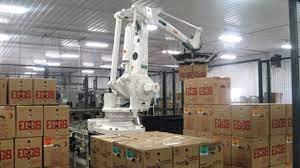 The Federal Reserve incorporates employment data in their decisions regarding interest rates, bond purchases and management of the economy. It is evident that job creation is slowing as denoted by data for March through mid-June. There is a growing realization that many jobs lost during COVID in 2020 may never return. Numerous small businesses that collectively employ a significant proportion of the working population ceased functioning in 2020, despite federal and state support programs. A number of large companies have introduced mechanization in response to a shortage of workers and there has been a general reappraisal of the function and contribution of middle management positions.
The Federal Reserve incorporates employment data in their decisions regarding interest rates, bond purchases and management of the economy. It is evident that job creation is slowing as denoted by data for March through mid-June. There is a growing realization that many jobs lost during COVID in 2020 may never return. Numerous small businesses that collectively employ a significant proportion of the working population ceased functioning in 2020, despite federal and state support programs. A number of large companies have introduced mechanization in response to a shortage of workers and there has been a general reappraisal of the function and contribution of middle management positions.
An additional factor relates to both resignations and more importantly retirement, reducing the number of available employees. In May, there was a discrepancy of 7.5 million jobs between current employment and the number of positions available as compared to February 2020. The overhang from COVID is still affecting the number of positions available and the inclination of workers to return to their previous jobs, even if available. It is evident that 2022 will have a different workforce composition compared to pre-COVID 2019.
 Jobs requiring repetitive manual labor will be replaced progressively by currently available and proven mechanical technology. The most intensive area for labor and the most replaceable in an egg- packing plant involves the transfer of packs to outer containers. Both Sanovo and Moba in addition to independents including Pasco, market case packers that show a beneficial return on capital investment at labor rates that now exceed $15 per hour. Previously egg producers were disinclined to invest in robotics when labor was readily available at lower wage rates than at present. Bar coding, machine vision and integrated IT systems relieve middle management of the pressures of record keeping and aspects of quality control. The design of modern grading and breaking installations lowers manual input for decontamination, as cleaning-in-place is now a feature of most new installations.
Jobs requiring repetitive manual labor will be replaced progressively by currently available and proven mechanical technology. The most intensive area for labor and the most replaceable in an egg- packing plant involves the transfer of packs to outer containers. Both Sanovo and Moba in addition to independents including Pasco, market case packers that show a beneficial return on capital investment at labor rates that now exceed $15 per hour. Previously egg producers were disinclined to invest in robotics when labor was readily available at lower wage rates than at present. Bar coding, machine vision and integrated IT systems relieve middle management of the pressures of record keeping and aspects of quality control. The design of modern grading and breaking installations lowers manual input for decontamination, as cleaning-in-place is now a feature of most new installations.
Unfortunately in hen barns, conversion from conventional cage housing to aviaries requires between two to three times the labor requirement and the work performed cannot be easily mechanized. More sophisticated control systems integrating ventilation, lighting, and alarms have reduced reliance on routine decisions on flock management. Advances in technology for injecting vaccines not only enhance the efficiency of administration but also improves accuracy in dosing and consistency in immunizing pullet flocks.
The realization that close to three million in the U.S. workforce have retired following the advent of COVID suggests the need for intensified training to allow workers to advance through the sequential levels of repetitive labor to supervision and then to management. USPOULTRY is providing recruiting grants to universities and colleges to attract new entrants to the industry to replace retirees and to introduce new concepts and skills. Obviously additional personnel with more specific training at all levels will be required as the industry expands and undergoes transition to alternative housing.
The U.S. egg industry underwent changes both in structure and introduction of innovative technology through the first two decades since the millennium. COVID has obviously accelerated this trend and senior management should be attuned to the needs of personnel and their skill sets in planning and capital investment.